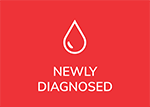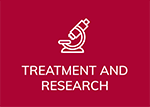Navigating the health care system as a lesbian, gay, bisexual, transgender, queer, intersex, or asexual (LGBTQIA) person can be challenging and uncomfortable. Stigma and discrimination can create barriers to health care that make members of the LGBTQIA community more vulnerable to cancer.
Discrimination in the medical system significantly hinders LGBTQIA individuals from receiving quality health care. LGBTQIA patients may choose not to disclose their sexual orientation due to fear of discrimination or stigmatization. Healthcare providers may refuse to provide medical care. Medical forms may only have “male” or “female” options. Patients may be misgendered by staff. Patients may experience delays in diagnosis and treatment. Spouses may be overlooked or ignored. Approximately 1 in 6 LGBTQIA patients report having experienced discrimination while seeking health care.
Barriers to health care can make it more difficult for LGBTQIA individuals to get cancer screenings and care. LGBTQIA individuals may have a greater risk of developing certain cancers and may be diagnosed with cancer at a younger age and a later stage than their heterosexual/cisgender counterparts.
Professional medical organizations are increasingly recognizing that members of the LGBTQIA community experience health disparities. The term “sexual and gender minority” (SGM) is now commonly used by the American Society for Clinical Oncology (ASCO) and the National Institutes of Health as an umbrella phrase that encompasses LGBTQIA populations as well as those whose sexual orientation, gender identity and expressions, or reproductive development varies from traditional, societal, cultural, or physiological norms.
These organizations recognize substantial gaps in knowledge about the disease burden and healthcare needs of SGM populations due to stigma and discrimination and a lack of data collection on gender identity or sexual orientation. No large national cancer registries collect data about sexual orientation or gender identity, so the number of LGBTQIA individuals diagnosed with cancer each year is unknown.
To move towards addressing health disparities, it is important for healthcare providers to create a more inclusive and safer environment for these patients. An ASCO special education session provided tips for healthcare providers to improve the care provided to SGM cancer patients.
- Use inclusive and specific language.
Ask patients for their names and pronouns. Using a patient’s chosen pronouns is part of being respectful. If someone is accompanying the patient, ask the patient, “Who’s here with you today?” so they have a chance to tell you. Don’t assume.
- Push for incorporating gender identity on patient intake forms and electronic medical records if it is not already included.
If it is not provided on a patient’s intake form, the provider should ask about the pronoun the patient uses.
- Include gender identity and sexual orientation in the eligibility criteria for clinical trials.
Only providing “male” or “female” options could unintentionally exclude intersex or transgender participants.
- Make clinic spaces inclusive.
Make sure all-gender bathrooms are available. Ensure that the names of clinics, waiting rooms, or other facilities are gender-neutral.
An ASCO position statement on “Strategies for Reducing Cancer Health Disparities Among Sexual and Gender Minority Populations” provides even more recommendations to address the needs of SGM populations affected by cancer and members of the oncology workforce who identify as SGM. Creating a safe and inclusive environment takes active work, and there is a growing awareness that the medical system has more work to do.
Take care of yourself first.
Ann Liu, PhD
















